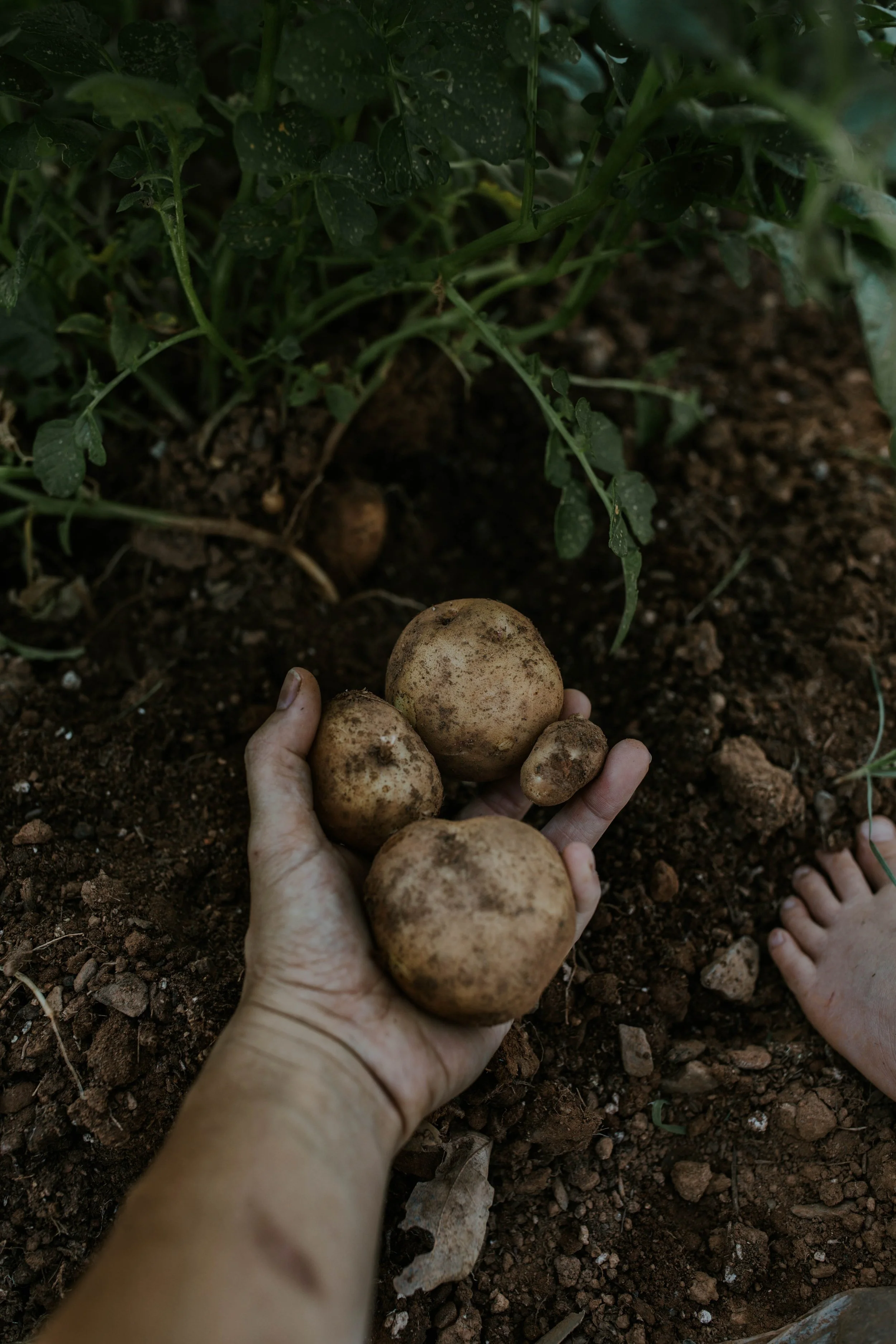How To Grow Your Own Potatoes
There are a few things that you will experience in life that will create a lasting mark on your soul that stays with you till the end. One of those experiences is spending time tending your garden, and ultimately harvesting your first crops. You’ll likely find that you will pray daily to always be able to draw upon your ability to grow your own food, for the taste and quality of your own work is far superior to that found in a local grocery. Beyond taste and upscale quality, you will also have the safe knowing that your produce is over 90% more nutrient dense than what is being sold in stores. The soil in the U.S is in severe decline and in a state of depletion, meaning that the produce of today has well less that 50% of the amount of minerals and vitamins compared to produce of say 50 years prior. The common use of artificial fertilizers containing heavy metals is another concern + imported fruits and vegetables are picked far before their ripening period, leaving them to ripen OFF the vine or branch resulting in less nutrients and in less flavor.
Potatoes are what is considered a staple food for most households across western culture and honestly, one of the easiest to grow on your own. Potatoes are extremely resilient and can be gown directly in ground, clay or cloth pots and pretty much wherever you can fit them, making them an ideal item to plant even if you are pressed for space.
W H E N T O P L A N T P O T A T O E S
I’ve noticed that most folks tend to over complicate the idea of planting tubular or root vegetables. They will tell you strict rules whereas in most things in life, I feel that they are more like guidelines. As long as you live in a climate that isn’t considered “extreme” when it comes to winter, you can grow tubular / root vegetables at least twice a year. Spring / Summer and Summer/ Fall. If you happen to miss the mark and plant in late Fall, be sure to mulch your potatoes with cover crop, straw or hay. For first plant, you’ll want to wait until after frost is over and your not at risk for another. I love to take advantage of planting twice as during the winter we make a LOT of stews and soups.
BUT FIRST… S O I L
Whether you decide to plant your potatoes in a garden bed or direct sew into the ground, be sure your soil is well drained as potatoes do not do well in soggy ground. The ideal soil pH level for potatoes is somewhat acidic, between 6 and 6.5, but they will tolerate soil with pH as low as 5 and you can find this out with a home soil meter (find it here) or to send in soil to be tested. The best mix that I have found is a mixture of potting soil, compost and sand. If you have ideal soil (we have clay) than mixing your compost and property earth would be sufficient.
H O W T O G R O W P O T A T O E S
Begin by using a potato seed(s). A seed is nothing more than a fully grown potato that has gone to eye (or sprout), meaning it has begun to sprout green arms. Cut the potato into halves or one to two-inch chunks, ensuring that each piece has at least on eye (green sprout) on it.
Note: If it is a very wet time of year and your soil is extremely damp, your seeds may be at risk of rotting. If this is the case, place all your seeds on a trays or baking sheets and leave out for the skins to callus for 24 to 48 hours. This callus skin will help create a barrier against the moisture.
Find a spot on your property that receives “full sun” which is at least 6 full hours of sunlight per day. Dig a trench at minimum 8" depth and add your “seeds” face down / eyes up, 12 inches apart. Cover seeds with 6 to 8 inches of soil and cover with hay or straw (optional). Within 2-4 weeks you’ll begin to see sprouts, repeat the first step of covering them with soil + straw. Repeat this step a few times as you see the small sprouts rising from the ground. When plants reach at least 10” tall begin to then “mound” the dirt and straw around the stems creating what looks like a hill around it.
W A T E R
2” of water per week. Soil should be at 60% moisture towards the middle of their growth. Maintain even moisture, especially from the time after the flowers bloom. Potatoes need 1 to 2 inches of water a week. Too much water right after planting and not enough as the potatoes begin to form can cause them to become misshapen. Stop watering when the foliage begins to turn yellow and die off. A technique so simple it sounds silly, is just to shove your finger a few inches deep into the ground - if its dry, you need to water.
A R E M Y P O T A T O E P L A N T S D Y I N G?
If plants are 10” or more at length and are beginning to yellow (but show no obvious sings of burning or bug infestation) than this a completely normal occurrence at the end of the life span. This is a signification that you are ready to begin pulling up your harvest.
C A N I U S E S T O R E B O U G H T P O T A T O E S ?
I personally have used store bought potatoes in the past and have come out with results that are perfectly find. If you plan on store bough potatoes, you will have to ensure that they are fully organic and local to your area (or at the very least are a variety that you will grow well in your region). Non organic potatoes are sprayed with a spudding / growth inhibitor that prevents them from sprouting. Although you can always use store bought, if your looking for a wide selection and options on varieties, finding reputable seed stores such as Veesy’s or Burpees will be your best option.
G R O W I N G P O T A T O E S I N C O N T A I N E R S
You can absolutely grow them in containers as long as they are significantly deep and that is at least 18” in diameter with 20” being best. They also have potato towers being sold on amazon allowing you to layer soil and hay ( find it here )
W H E N T O H A R V E S T
There are a few options for harvest. When you see the plant begin to flower, this means that there are new “tender” potatoes under the ground. As mentioned above, when you see the plant beginning to yellow and die back, this means that the tubulars are no longer drawing energy from the plant and you can now harvest your entire crop.
MAKE SURE TO SAVE SOME POTATO “SEEDS” FOR NEXT PLANTING SEASON!
How Long Will They Keep?
Potatoes that have been cured will last several months in a cool dark place like root cellar or pantry. To “cure” simply avoid washing them after harvest and wrap them in towels, placing them in their dark space for two weeks. Wash as you use.




